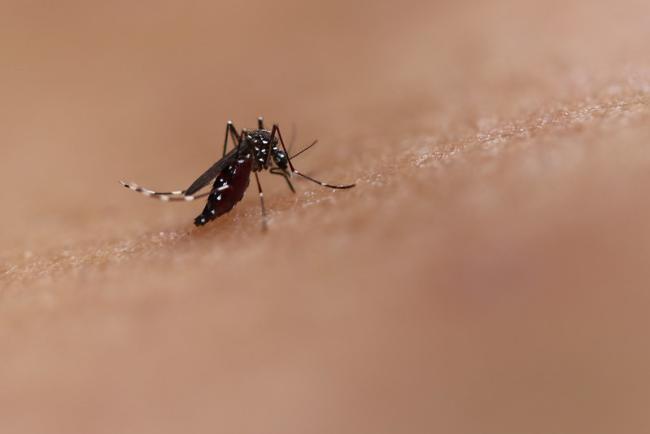Study of mosquito protein could lead to treatments against life-threatening viruses
Wednesday, March 10, 2021
Study of mosquito protein could lead to treatments against life-threatening viruses

The mosquito protein AEG12 strongly inhibits the family of viruses that cause yellow fever, dengue, West Nile, and Zika and weakly inhibits coronaviruses, according to scientists at the National Institutes of Health (NIH) and their collaborators. The researchers found that AEG12 works by destabilizing the viral envelope, breaking its protective covering. Although the protein does not affect viruses that do not have an envelope, such as those that cause pink eye and bladder infections, the findings could lead to therapeutics against viruses that affect millions of people around the world. The research was published online in PNAS.
Scientists at the National Institute of Environmental Health Sciences (NIEHS), part of NIH, used X-ray crystallography to solve the structure of AEG12. Senior author Geoffrey Mueller, Ph.D., head of the NIEHS Nuclear Magnetic Resonance Group, said at the molecular level, AEG12 rips out the lipids, or the fat-like portions of the membrane that hold the virus together.
"It is as if AEG12 is hungry for the lipids that are in the virus membrane, so it gets rid of some of the lipids it has and exchanges them for the ones it really prefers," Mueller said. "The protein has high affinity for viral lipids and steals them from the virus."
As a result, Mueller says the AEG12 protein has great killing power over some viruses. While the researchers demonstrated that AEG12 was most effective against flaviviruses, the family of viruses to which Zika, West Nile, and others belong, it is possible AEG12 could be effective against SARS-CoV-2, the coronavirus that causes COVID-19. But, Mueller said it will take years of bioengineering to make AEG12 a viable therapy for COVID-19. Part of the problem is AEG12 also breaks opens red blood cells, so researchers will have to identify compounds that will make the protein target viruses only.
Alexander Foo, Ph.D., an NIEHS visiting fellow and lead author of the paper, explained that mosquitoes produce AEG12 when they take a blood meal or become infected with flaviviruses. Like humans, mosquitoes mount a vigorous immune response against these viruses, with AEG12 bursting their viral covering. But, at the beginning of the project, Foo and his colleagues knew little about the function of AEG12.
"The prospect of studying a new protein is exciting, yet daunting," Foo said. "Thankfully, we had enough clues and access to a wide range of expertise at NIEHS to piece it together."
Co-author and crystallography expert Lars Pedersen, Ph.D., is leader of the NIEHS Structure Function Group. He routinely uses information about a molecule’s physical makeup in his work and encourages more scientists to consider using this data in their studies. He said, "Our research shows that understanding the structure of a protein can be important in figuring out what it does and how it could help treat disease."
About the National Institute of Environmental Health Sciences (NIEHS): NIEHS supports research to understand the effects of the environment on human health and is part of the National Institutes of Health. For more information on NIEHS or environmental health topics, visit www.niehs.nih.gov or subscribe to a news list.
About the National Institutes of Health (NIH): NIH, the nation's medical research agency, includes 27 Institutes and Centers and is a component of the U.S. Department of Health and Human Services. NIH is the primary federal agency conducting and supporting basic, clinical, and translational medical research, and is investigating the causes, treatments, and cures for both common and rare diseases. For more information about NIH and its programs, visit www.nih.gov.
NIH…Turning Discovery Into Health®
Foo ACY, Thompson PM, Chen S-H, Jadi R, Lupo B, DeRose EF, Arora S, Placentra VC, Premkumar L, Perera L, Pedersen LC, Martin N, Mueller GA. 2021. The mosquito protein AEG12 displays both cytolytic and antiviral properties via a common lipid transfer mechanism. Proc Natl Acad Sci USA: doi: 10.1073/pnas.2019251118.
Institute/Center
Contact
301-642-9910


